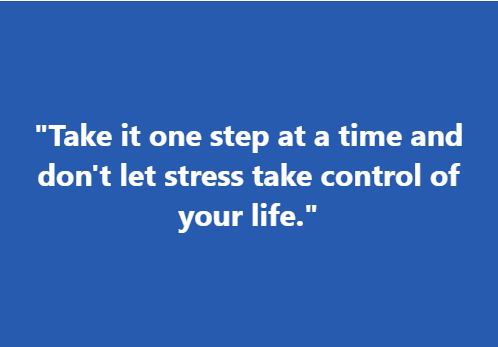Stress Calculator
| Physical Symptoms | Psychological Symptoms | Behavioral Symptoms | Stress Level |
|---|
Reduce stress with these 10 simple methods. Learn how to relax, reduce anxiety, and find inner peace in just minutes a day. Start feeling better now!

Table of Contents
Stress can be a difficult emotion to manage and often requires a lot of time and effort to come up with a successful strategy for reducing it.
While everyone experiences stress differently, there are some general methods that can help most people effectively manage stress levels. In this article, we will discuss 10 easy stress reduction methods that anyone can try.
These methods are simple but effective, so you should be able to start reducing your stress levels today.
Stress Reduction
1. Exercise is a proven stress-reducer, but it doesn’t have to be high-intensity or time-consuming. You can get your heart rate up with a brisk walk around the block or by doing some gentle yoga stretches at home.
2. Mindfulness meditation has been shown to reduce anxiety and lower cortisol levels in the body, which is why it’s becoming increasingly popular as a stress reduction method. There are many apps and online resources available that provide guided meditations for beginners.
3. Spending time in nature has been shown to have a calming effect on the nervous system, so take a break from screens and go for a hike, sit in the park, or even just step outside for some fresh air and sunshine.
Overall, these methods are easy to incorporate into your daily routine and don’t require any special equipment or training.
By taking small steps towards reducing stress every day, you’ll be able to improve your mood, focus better on work or hobbies, and enjoy an overall sense of well-being.
Method 1: Exercise
Exercise is one of the most effective ways to reduce stress. Physical activity releases endorphins, which are chemicals in the brain that act as natural painkillers and mood elevators.
Exercise also helps to reduce levels of cortisol, a hormone associated with stress. Even moderate exercise for 30 minutes a day can have significant benefits in reducing stress.
There are many types of exercises that you can try. Aerobic exercises like running, cycling, or swimming are great for releasing tension and boosting your mood.
Yoga and Pilates are also gentle workouts that help you focus on your breath while stretching your muscles, providing relaxation and calmness to both mind and body.
If you find it tough to fit exercise into your busy schedule, try incorporating physical activity into other areas of your day such as taking the stairs instead of the elevator or going for a walk during lunch break.
You can even involve friends or family members in fun activities like hiking or playing sports together!
Method 2: Eat Healthy Food
Eating healthy food is one of the most effective ways to reduce stress. When we eat a balanced and nutritious diet, our body gets all the essential nutrients it needs to function efficiently.
A well-nourished body is better able to cope with stress than an undernourished one.
Eating fresh fruits and vegetables, whole grains, lean protein sources, and healthy fats can help boost energy levels and prevent mood swings.
In addition to providing essential nutrients for our bodies, eating healthy food also has mental benefits.
Studies suggest that certain foods like fish high in omega-3 fatty acids and leafy greens like spinach can help improve cognitive functions such as memory and attention span.
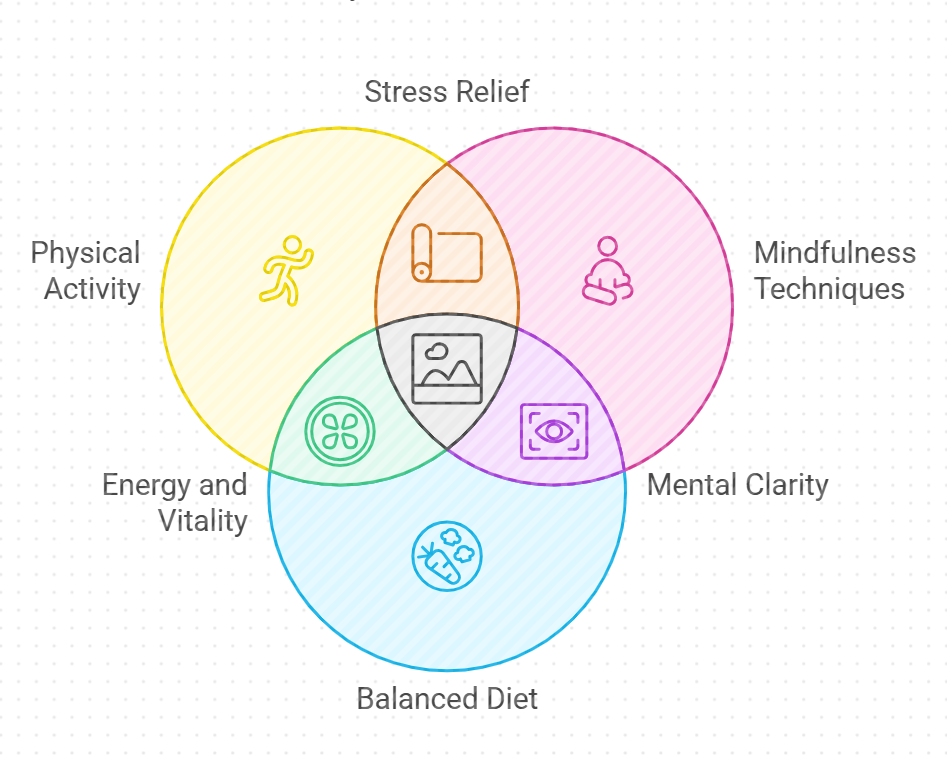
A well-balanced diet can help maintain stable blood sugar levels which are crucial in avoiding mood swings.
It’s important to keep in mind that eating healthy doesn’t mean depriving yourself of your favorite foods entirely. It’s all about moderation and balance.
Treating yourself occasionally will not harm your health or disrupt your stress reduction goals as long as you continue to focus on maintaining a balanced diet overall.
Method 3: Take Breaks
Taking breaks is an important method for reducing stress. It involves stepping away from your work or other stressful situation to give yourself a chance to recharge and rejuvenate.
Taking breaks can help you clear your mind, decrease feelings of overwhelm, and increase productivity when you return to the task at hand.
There are many ways to take effective breaks throughout the day. One popular method is the Pomodoro Technique, which involves working for 25 minutes followed by a five-minute break.
After four rounds of this cycle, take a longer break of around 15-20 minutes. Another way to take breaks is by practicing mindfulness meditation or deep breathing exercises.
This technique can help reduce stress hormones in the body and promote relaxation.
It’s essential to remember that taking a break doesn’t mean checking social media or browsing online shops as those activities won’t provide any relief from stress.
Instead, try going outside for some fresh air or doing light stretches during your breaks if possible.
The goal should be giving yourself space from whatever was causing stress in the first place and coming back refreshed and energized.
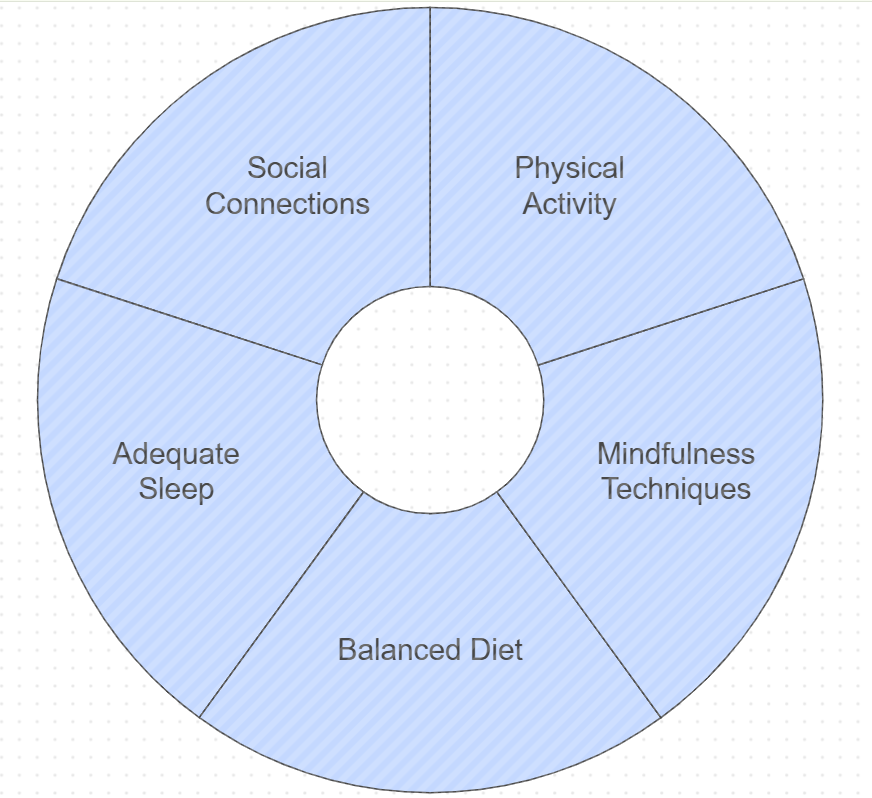
Method 4: Practice Mindfulness
Mindfulness is the practice of being present and fully engaged in the current moment. It involves focusing on your thoughts, emotions, and physical sensations without judgment or distraction.
Practicing mindfulness can help reduce stress by improving focus, decreasing anxiety levels, and increasing overall well-being.
One way to incorporate mindfulness into your daily routine is through meditation. Find a quiet space and sit comfortably with your eyes closed.
Focus on your breath as you breathe in and out slowly. If you get distracted by thoughts or sounds around you, gently bring your attention back to your breathing.
Another way to practice mindfulness is through mindful eating. Instead of rushing through meals or multitasking while you eat, take time to savor each bite and pay attention to the flavors and textures of the food.
This can help promote healthy eating habits while also reducing stress levels.
Overall, incorporating mindfulness practices into your daily routine can have significant benefits for reducing stress levels and improving overall well-being.
Method 5: Create a Routine
Creating a routine is a key method to reduce stress in everyday life. By setting up a regular schedule, you can create structure and predictability in your day, which can help alleviate feelings of overwhelm and anxiety.
Begin by identifying the tasks or activities that are most important to you, such as exercise or meditation, and build them into your daily routine. This will help ensure that they become a consistent part of your day-to-day life.
Additionally, creating a nighttime routine can be particularly helpful for reducing stress and improving sleep quality. This might include practicing relaxation techniques like deep breathing, reading a book, or taking a warm bath before bed.
By building these habits into your nightly routine, you signal to your body that it’s time to wind down and prepare for rest.
Remember that routines don’t have to be rigid – they should be flexible enough to accommodate changes in your schedule or unexpected events. However, having some level of predictability can go a long way in reducing stress levels over time.
Whether it’s making time for self-care activities or sticking to consistent meal times throughout the day, developing healthy routines is an important tool for managing stress on an ongoing basis.
Method 6: Take Time for Yourself
Taking time for yourself is one of the most important stress reduction techniques. When you feel overwhelmed and stressed out, it’s easy to forget about self-care.
However, taking some time out of your busy schedule to relax and recharge can have a significant impact on your mental well-being. You don’t have to do anything elaborate or expensive – just find something that you enjoy doing and spend some time doing it.
One way to take time for yourself is by practicing mindfulness meditation. This involves focusing your attention on the present moment without judgment or distraction.
Mindfulness meditation has been shown to reduce stress, anxiety, and depression while improving overall well-being.
Another way to take care of yourself is by engaging in physical activity such as yoga or going for a walk in nature. Exercise helps release endorphins which are known as “feel-good” hormones that can help reduce stress levels.
Finally, make sure you are getting enough sleep each night – this is essential for reducing stress levels and maintaining good health overall. If you’re having trouble sleeping, try creating a relaxing bedtime routine such as reading a book or taking a warm bath before bed.
Remember, taking care of yourself should always be a priority – so make sure you set aside enough time each day to focus on self-care activities that make you feel happy and relaxed!
Method 7: Connect with Others
Method 7: Connect with Others. Humans are social beings, and we thrive on meaningful connections with other people.
When we feel isolated or disconnected, it can lead to feelings of stress and anxiety. To combat this, make an effort to connect with others regularly.
This can take many forms – a phone call with a friend, meeting up for coffee or lunch, or attending social events or clubs that interest you – but the key is to find ways to engage with others in a way that feels authentic and enjoyable for you.
Not only will this help reduce stress by providing social support and a sense of belonging, but it can also bring fun and enjoyment into your life.
Of course, connecting with others can be challenging during times of social distancing or when facing other barriers such as distance or mobility issues.
However, there are still ways to stay connected virtually through video calls or online communities centered around your interests.
Whatever form it takes, making time for connection is an important part of reducing stress and improving overall well-being.
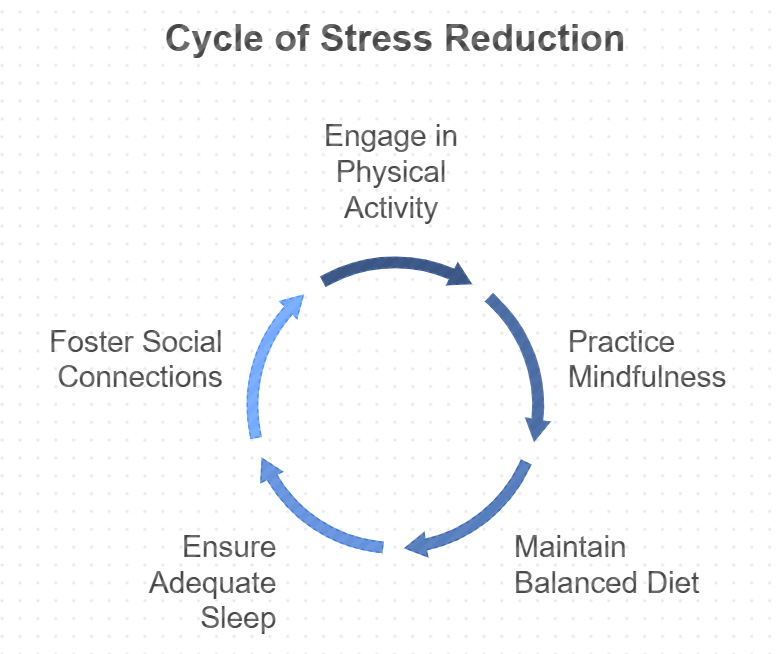
Method 8: Reduce Caffeine Intake
Reducing caffeine intake is one of the easiest ways to reduce stress. Caffeine can make you feel anxious and jittery, which can exacerbate feelings of stress.
If you find yourself relying on coffee or energy drinks throughout the day, try gradually cutting back your consumption. Swap out a cup of coffee for a decaf version, or switch to herbal tea instead.
It’s important to note that reducing caffeine intake doesn’t mean eliminating it altogether. In fact, sudden withdrawal from caffeine can cause headaches and other unpleasant symptoms that may actually increase your stress levels.
Instead, aim to consume caffeine in moderation and at appropriate times of the day. For example, avoid consuming caffeinated beverages in the hours leading up to bedtime.
Overall, reducing caffeine intake is a simple yet effective way to manage stress levels. By making small changes over time, you can improve your overall well-being and feel more relaxed throughout the day.
Method 9: Get Enough Sleep
Getting enough sleep is vital for reducing stress. Sleep deprivation can cause irritability, mood swings, and difficulty concentrating.
Therefore, it is essential to prioritize quality sleep to reduce stress levels.
The recommended amount of sleep per night is seven to eight hours. Practicing good sleep hygiene such as keeping a consistent sleep schedule, avoiding caffeine and alcohol before bedtime, and creating a relaxing environment can improve the quality of your sleep.
Inadequate sleep not only increases stress but also puts you at risk for various health problems like obesity, diabetes, and heart disease.
So take care of yourself by making sure you get enough restful sleep each night.
Method 10: Seek Professional Help
If you’ve tried various stress-reduction methods but still find yourself struggling with overwhelming anxiety or worry, it may be time to seek professional help.
Speaking with a therapist or counselor can provide valuable support and guidance as you work through challenging feelings and learn new coping strategies.
Professional help can take many forms, depending on your individual needs and preferences.
You might opt for traditional talk therapy sessions, which allow you to explore your thoughts and emotions in a safe and supportive setting.
Alternatively, you may benefit from cognitive-behavioral therapy (CBT), which focuses on identifying negative thought patterns and replacing them with more positive ones.
Whatever form of professional help you choose, know that reaching out is a brave step towards improving your mental health. Don’t hesitate to seek the support you need to manage stress and live your best life possible.
Conclusion
In conclusion, incorporating stress reduction methods into your daily routine can greatly improve your overall well-being.
There are numerous simple techniques that can be practiced to reduce stress levels such as meditation, deep breathing exercises, and yoga.
Taking a few minutes out of your day for relaxation can help to reduce anxiety and increase productivity.
Another effective way to reduce stress is through exercise. Regular physical activity has been proven to release endorphins which are natural mood boosters, making it an excellent way to combat stress.
Even just a 30-minute walk or jog around the block can help clear your mind and provide some much-needed relief from daily pressures.
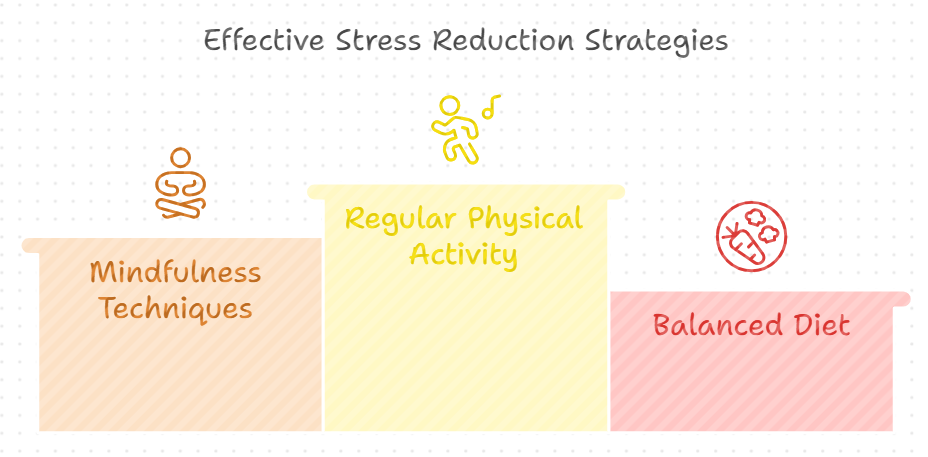
Lastly, it’s important to remember that everyone experiences stress differently, and what works for one person may not work for another.
Experimenting with different techniques until you find what works best for you is key to managing stress levels effectively. By prioritizing self-care and taking steps toward reducing stress, you’ll be better equipped to handle any challenges that come your way.
